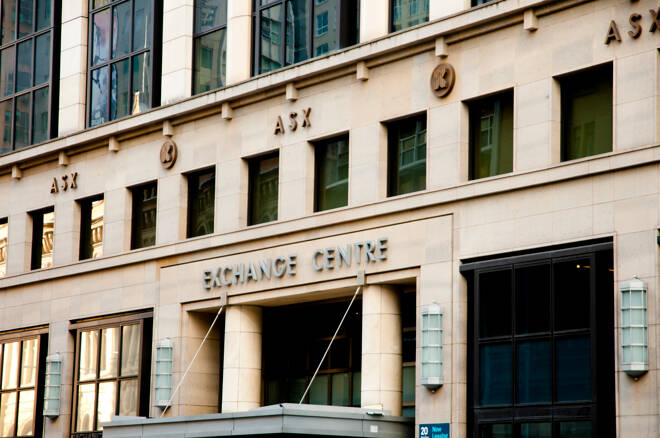Advertisement
Advertisement
ASX200: Weekly Wrap – 05/11/2021
By:
It was a bullish week for the ASX200, with monetary policy and economic data delivering support alongside corporate earnings. Economic data in the week ahead will be a test, however.
Economic Calendar
Tuesday, 9th November
NAB Business Confidence (Oct)
Wednesday, 10th November
Westpac Consumer Sentiment (Nov)
Thursday, 11th November
Employment Change (Oct)
Full Employment Change (Oct)
Unemployment Rate (Oct)
The ASX200
It was a bullish week for the ASX200, which rose by 1.82% in the week ending 5th November. In the week prior, the ASX200 had fallen by 1.24%.
FED and RBA monetary policy delivered support to the ASX200 in the week, alongside upbeat corporate earnings.
Disappointing economic data from Australia did little damage, with private sector PMIs from China easing concerns over the regional economic outlook.
In October, the Caixin Manufacturing PMI increased from 50.0 to 50.6, with the Services PMI up from 53.4 to 53.8.
Survey-based data did reveal, however, that supply-chain disruption continued to peg back a speedier economic recovery.
The Stats
At the start of the week, manufacturing sector data disappointed, with the AIG Manufacturing Index falling from 51.2 to 50.4 in October.
According to the October survey,
- Four of the activity indexes contracted in October, with declines in production, employment, exports, and supplier deliveries.
- Forward orders continued to expand at a strong pace, however, suggesting a likely recovery once COVID-19 restrictions are eased further.
Late in the week, trade data drew attention. Australia’s trade surplus narrowed from A$15.077bn to A$12.243bn, versus a forecasted narrowing to A$12.200bn.
According to the ABS,
- Goods and services exports fell A$3,081m (6%) to A$44,969m, with the decline attributed to falling iron ore prices.
- Imports of goods and services declined A$586m (2%) to A$32,725m driven by continued global supply chain constraints.
Monetary Policy
In line with market expectations, the RBA stood pat on monetary policy. Weighing on the ASX200, however, was a more hawkish outlook on monetary policy. Upbeat sentiment towards the economy and higher inflation suggested that the RBA may make a move earlier than the previously projected 2024.
This was reflected in the RBA’s decision to discontinue the target of 10 basis points for the April 2024 Australian Government Bond.
The Market Movers
It was a mixed week for the banks. Commonwealth Bank of Australia rallied by 4.81%, with ANZ (+2.35%) and Macquarie Group (+2.32%) also finding strong support. NAB ended the week with a more modest 0.77% gain. Bucking the trend, however, was Westpac that tumbled by 12.15% off the back of disappointing earnings. A rise in expenses and a fall in core earnings led to a decline in the Bank’s NIM, leading to the sell-off.
Commodity stocks had also had a mixed week. Fortescue Metals Group Ltd rose by 2.44%, with Newcrest Mining up 0.68%. Rio Tinto and BHP Group ended the week down by 1.64% and by 1.34% respectively, however.
Other Asian Markets
Elsewhere, it was a bearish week for the Hang Seng Index and CSI300, while the Nikkei 225 found support.
The CSI300 and the Hang Seng Index ended the week down by 1.35% and by 2.00% respectively, while the Nikkei 225 rose by 2.49%.
The Week Ahead
It’s a busier week ahead on the Asian economic calendar. In the 1st half of the week, Australian business and consumer sentiment figures will be in focus.
With the RBA looking for a pickup in both business investment and consumption, both sets of numbers will influence.
At the end of the week, however, employment figures for October will likely have the greater impact.
From elsewhere, trade data from China, due out at over the weekend will influence as will inflation figures for October. China inflation figures are due out on Wednesday.
Supply-chain disruption continues to push prices northwards. Another spike in inflation would test support for riskier assets.
On Thursday, industrial production figures will also draw plenty of interest. The numbers have been on a downtrend in recent months…
Economic data from the U.S, including inflation and jobless claims will also provide direction in the week.
Away from the economic calendar, corporate earnings will remain a key driver, however.
About the Author
Bob Masonauthor
With over 28 years of experience in the financial industry, Bob has worked with various global rating agencies and multinational banks. Currently he is covering currencies, commodities, alternative asset classes and global equities, focusing mostly on European and Asian markets.
Advertisement
